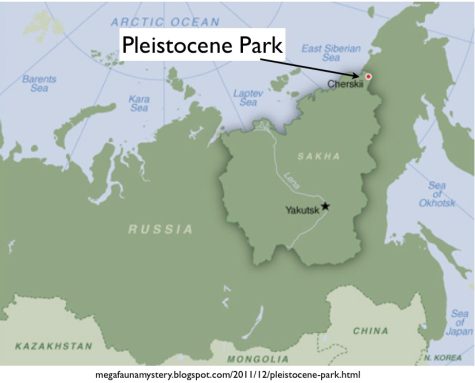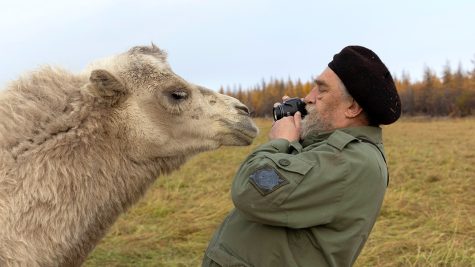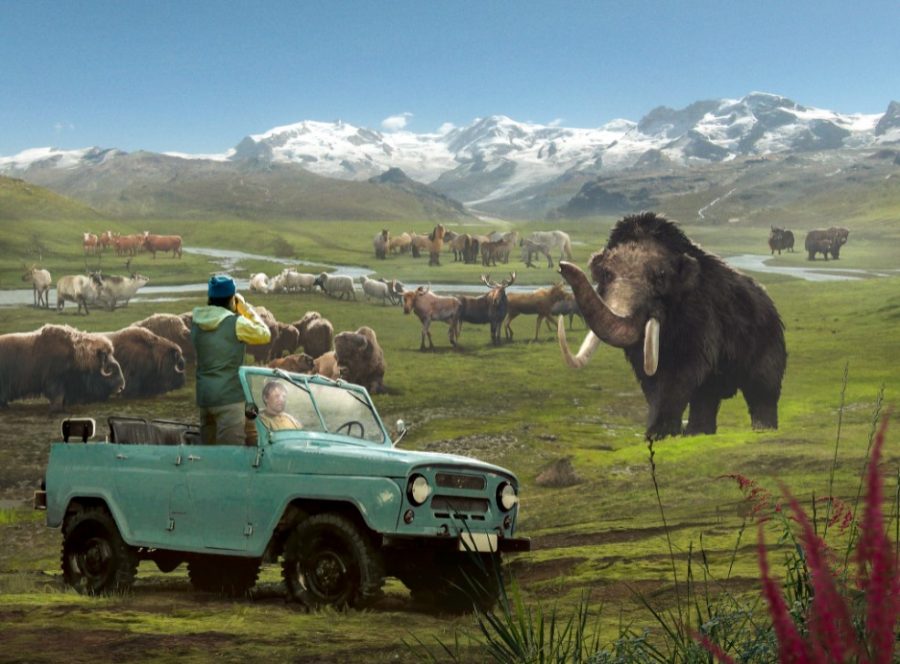Jurassic Park…of Mammoths?
January 9, 2023
In Siberia, one of the coldest regions of the world, a less-dramatic version of Jurassic Park exists. Led by Russian scientist Sergey Zimov and his son, Nikita Zimov, a nature reserve known as Pleistocene Park is testing the hypothesis for combating climate change. Their question: Can recreating the once vast mammoth steppe ecosystem save the Arctic?
The mammoth steppe was once a sprawling, diverse, and productive ecosystem that has been replaced by Earth’s current largest ecosystem, the taiga forest. These grasslands were home to hundreds of species, ranging from wooly mammoths to wooly rhinos, caribou, dire wolves, steppe bison, saber-toothed tigers, and wild horses. Most of these species have since gone extinct; however, some, such as the musk ox and caribou, alongside relatives of ancient species, such as the yak, European bison, Bactrian camel, and Yakutian horse, may be able to fulfill the same ecological niches as their ancestors. Even so, the reintroduction of these faunas to the current ecosystems would be unachievable without the flora they rely on: grass.
Grasses are very productive organisms, resilient, and effective at nutrient cycling. This means that most of the nutrients that go into growing the plants are returned to the soil when processed. Even so, it is reliant on fauna to help break it down to complete said nutrient cycle and to trample or eat competing flora. It is believed that the taiga forests of today were only able to overtake the ancient grasslands because the megafauna that trampled the trees in search of food, disappeared. This is why reintroducing fauna, especially megafauna, can be the keystone to recreating this ecosystem.

The location of Pleistocene Park in Northern Siberia
With that in mind, recreating an ancient ecosystem is cool and all, but what purpose does this serve? The primary function of reintegrating the mammoth steppe into the Siberian arctic is to help sustain the permafrost that is being exponentially melted by climate change. This permafrost holds thousands, if not millions of years of carbon dioxide and other chemicals, such as methane, which are released into our atmosphere as it melts. This causes an increase in global warming and climate change, creating a vicious circle. To put a stop to this circle, recreating the mammoth steppe can allow the harsh Siberian winters to refreeze the permafrost annually, which can’t occur when layers of thick, undisturbed snow insulate the ground that holds onto summer heat. This is furthered by the moisture-holding mosses that currently coat the ground.
In comparison, grasses can have deep roots, breaking the insulating surface soil. In addition, the trampling of snow by fauna, as well as the removal of trees and shrubs, can further expose permafrost to the winter cold. In recent years this effect has been observed firsthand. For example, when air temperatures dropped to -40°F, the ground under undisturbed snow only dropped to 23°F, while the ground with snow trampled by the fauna of Pleistocene Park dropped to -22°F. This is a great sign, proving the Zimovs’ hypothesis. Thus, recreating this ecosystem can help in fighting climate change, a solution that was voted as one of the “top 100 substantive solutions to global warming” by some of the world’s top climate scientists.

Sergey Zimov and a Bactrian camel in Pleistocene Park
Furthermore, the current megafauna of Pleistocene Park include musk ox, caribou, Yakutian horses, and Bactrian camels, but it has been considered that if ancient megafaunas, such as the wooly mammoth, steppe bison, or cave lion, were to be brought back from extinction, they could thrive in Pleistocene Park. This is more of a reality than we may think, as such de-extinction has already occurred, not with animals, but with plants. To learn more about this, read my next Earth is Weird entry: “Back from the Dead: the story of a flower.”
Pleistocene Park is a solution to climate change that may also be a testing ground for genetics and cloning. From reviving ancient plants, to de-extinct wooly mammoths, the recreation of a prehistoric ecosystem in one of the coldest regions of the world is a topic to keep an eye on.





